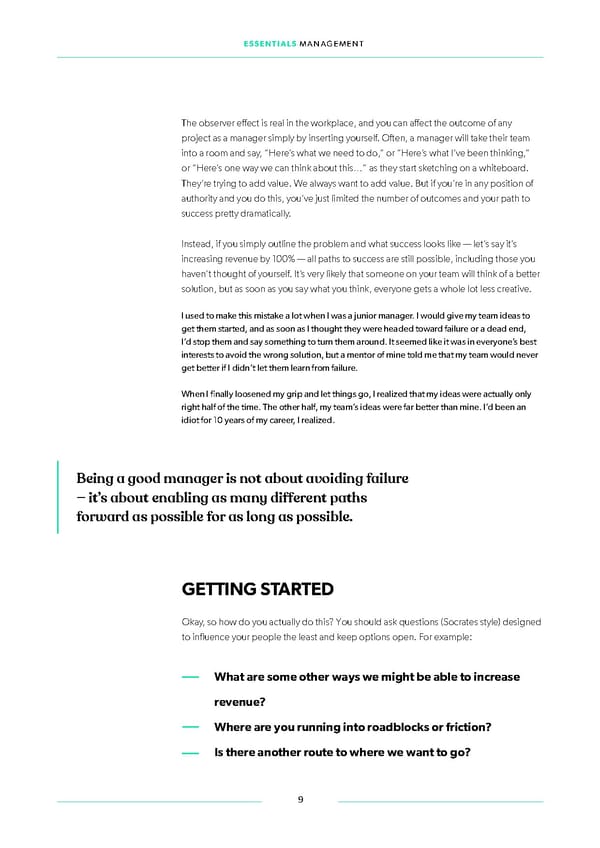ESSENTIALS MANAGEMENT The observer effect is real in the workplace, and you can affect the outcome of any project as a manager simply by inserting yourself. Otfen, a manager will take their team into a room and say, “Here’s what we need to do,” or “Here’s what I’ve been thinking,” or “Here’s one way we can think about this…” as they start sketching on a whiteboard. They’re trying to add value. We always want to add value. But if you’re in any position of authority and you do this, you’ve just limited the number of outcomes and your path to success pretty dramatically. Instead, if you simply outline the problem and what success looks like — let’s say it’s increasing revenue by 100% — all paths to success are still possible, including those you haven’t thought of yourself. It’s very likely that someone on your team will think of a better solution, but as soon as you say what you think, everyone gets a whole lot less creative. I used to make this mistake a lot when I was a junior manager. I would give my team ideas to get them started, and as soon as I thought they were headed toward failure or a dead end, I’d stop them and say something to turn them around. It seemed like it was in everyone’s best interests to avoid the wrong solution, but a mentor of mine told me that my team would never get better if I didn’t let them learn from failure. When I ifnally loosened my grip and let things go, I realized that my ideas were actually only right half of the time. The other half, my team’s ideas were far better than mine. I’d been an idiot for 10 years of my career, I realized. Being a good manager is not about avoiding failure — it’s about enabling as many different paths forward as possible for as long as possible. GETTING STARTED Okay, so how do you actually do this? You should ask questions (Socrates style) designed to inlfuence your people the least and keep options open. For example: What are some other ways we might be able to increase revenue? Where are you running into roadblocks or friction? Is there another route to where we want to go? 9
 Essentials Management First Round Capital Page 8 Page 10
Essentials Management First Round Capital Page 8 Page 10